- photo contests ▼
- photoshop contests ▼
- Tutorials ▼
- Social ▼Contact options
- Stats ▼Results and stats
- More ▼
- Help ▼Help and rules
- Login
The Twenty Most Popular 35mm Photo Cameras in History
So much has been written about cutting edge advances in digital photography, that we decided to put together a list of the favorite 35mm camera of times gone by. Any such list is of course subjective.
What you see here is arguably an acceptable list of the most loved film cameras of the last few decades.
Do you have other favorites? Just write them down in the comments!
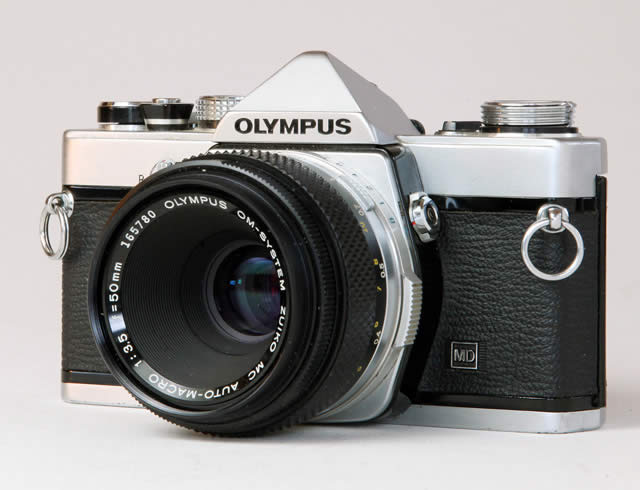
The OM 1, thanks to its compact size and versatility, quickly became the favored tool of astro-photographers, in the 70s. Its metal body weighed just over half a kilo, and this is probably why the OM 1 was (and still is ) a part of many astronomers’ kits. The fact that it is still sought after on the used markets speaks of just how much of a pleasure this camera is to use.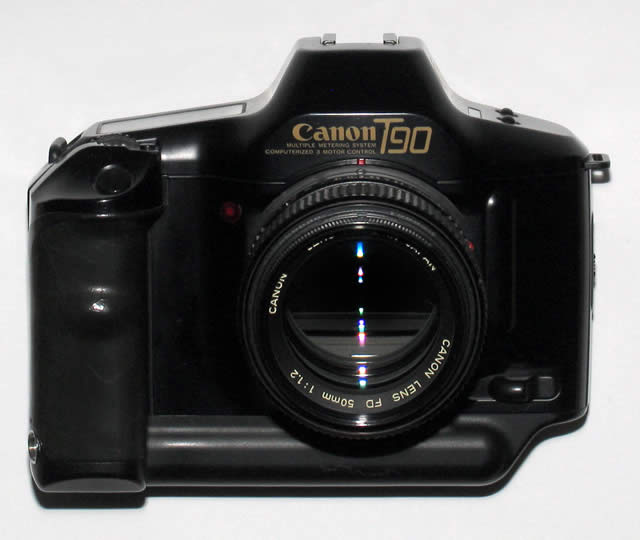
This was the last of the manual focus professional cameras from the Canon camp, and also the last to use the FD mount. It was a top of the line camera of its time, boasting of features such as the user interface, professional design and automation options. It came with an in built motor drive, giving 4.5 frames per second. The T90 also had the most sophisticated light metering system of its times.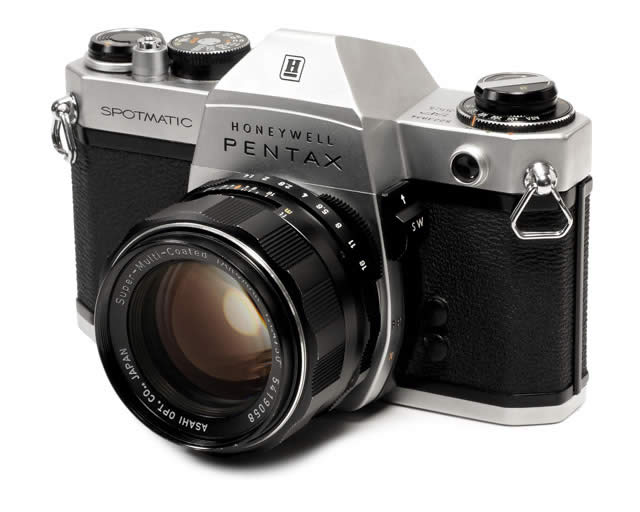
Asahi Corporation’s Spotmatic was a legend in its own right. Introduced in 1964, it was the first company to successfully market and sell a through the lens, or TTL metering system. As the name suggests, the camera sued a spot metering system, which turned out to be a delight with photographers around the world. Moreover, the legendary image quality of the Super Takumar lenses that this camera used, is talked about even today!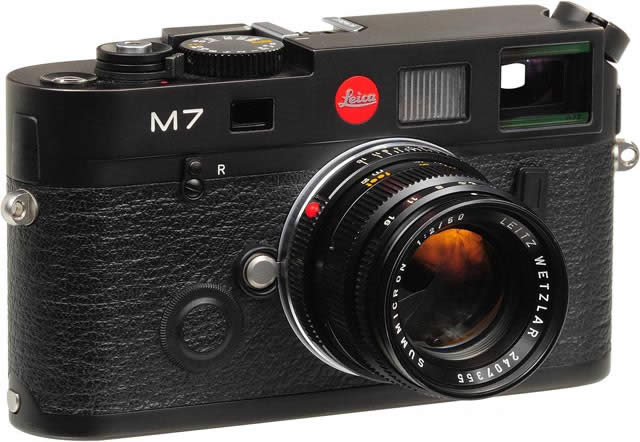
The ‘M’ series is Leica’s iconic line of range finder cameras that somehow had a special appeal with photojournalists of yesteryear. The M7 is a ‘new’ model in the series, launched as recently as 2002. It bridges the classic M series 35mm versatility and portability, with modern cutting edge technology. It offers complete manual controls, as well as an aperture priority mode. The M7 can still be used mechanically (with limited control options) if you run out of batteries.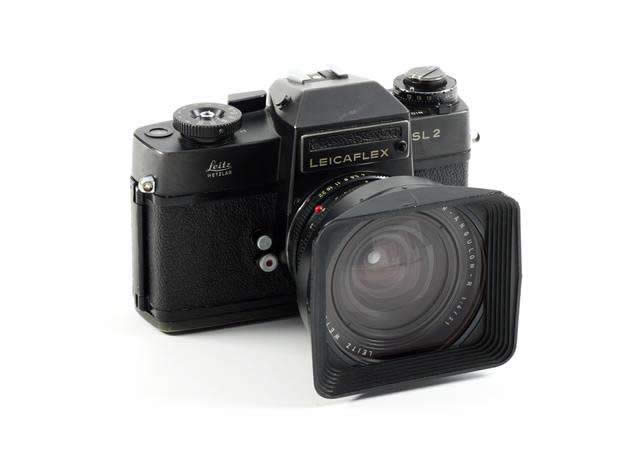
This was the third ever SLR to be launched by Leica, following the Leicaflex and the Leicaflex SL. It came with a micro prism and also a split image focusing system, which many found easier to use than the conventional systems of the day. Leica was definitely late to enter the SLR markets, but people who swear by Leica still feel that the Leicaflex SL2 was one of the best SLRs ever to be launched.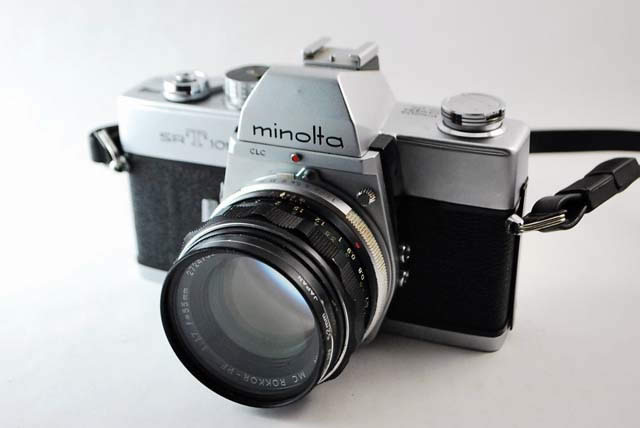
Launched in 1966, the Monilta SRT 101 sold well for over ten years, with only minor changes to the body over the time. This was the first camera from Minolta that offered full aperture metering capabilities, something that took Nikon an additional twelve years to accomplish! The camera had an extremely bright viewfinder with a center prism focusing aid, and was a pleasure to use. It was sold with a 58mm f 1.4 ‘standard’ Roccor lens.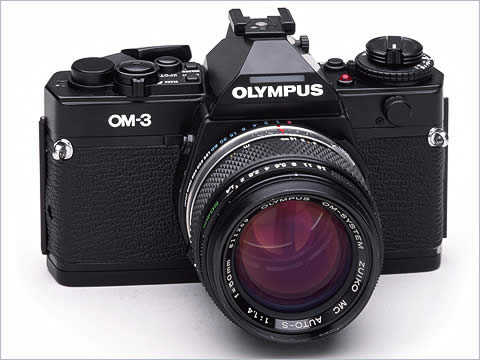
The OM3 was definitely one of the most advanced mechanical cameras ever to have been produced. It offered an incredibly high shutter speed of 1/2000 sec and also the latest metering technology of its time – multi spot. It had a compact body, and a viewfinder that was extremely large and bright. It offered surprisingly long battery life, but of course you could still make use of the mechanical shutter even when and if the batteries were drained out.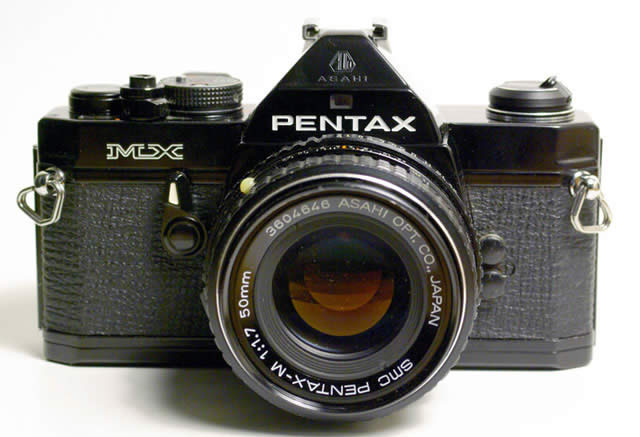
Until the LX came out, this was the flagship professional SLR from Pentax. Like many other cameras of the time, the Pentax MX depended on batteries only for its light meter. The horizontal curtain type shutter was completely mechanically controlled. This was a well-built camera, small in size and high on performance – something that is commonplace today, but quite remarkable at the time. The depth of field preview, lacking in the K1000, was a welcome feature with the MX.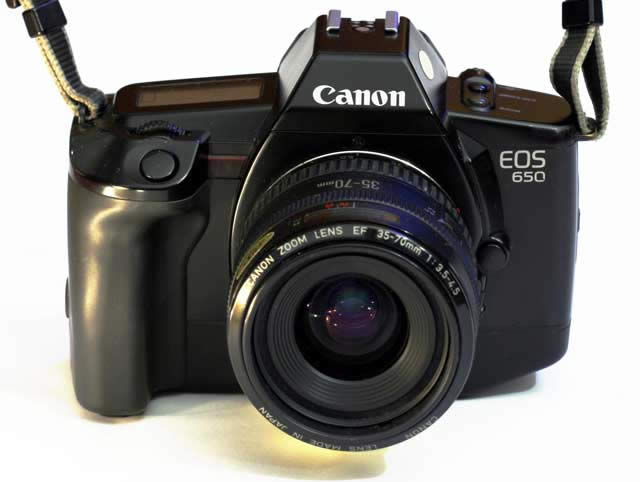
When the Canon EOS 650 was launched in 1987, it was unlike any other camera on the market. It had an intelligent lens-camera mount, sensitive to information transfer apart from of course simply mounting the lens in place. This camera marked the beginning of a series of automatic features and ‘intelligent’ cameras from Canon. The electronic input dial on this camera was an instant hit with photographers.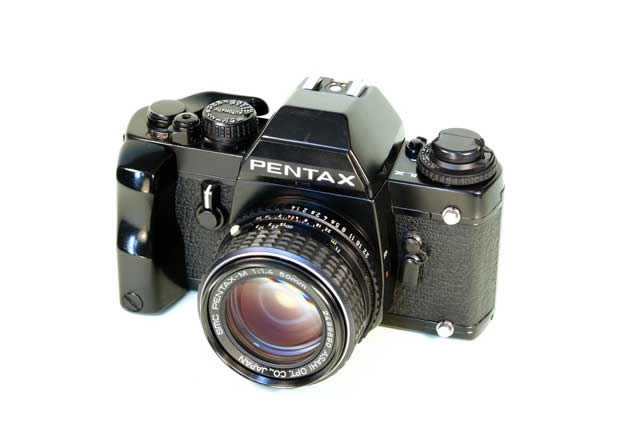
Launched in 1980 as a ‘pin-sized jewel of a camera’, the Pentax MX remained in production until 1997! This camera body was rugged and dependable, and the choice for many many professional photographers during its 17 year production. The LX came to be known as a camera that would rarely let you down. It was an iconic model if you look at the development of 35mm camera systems over the years.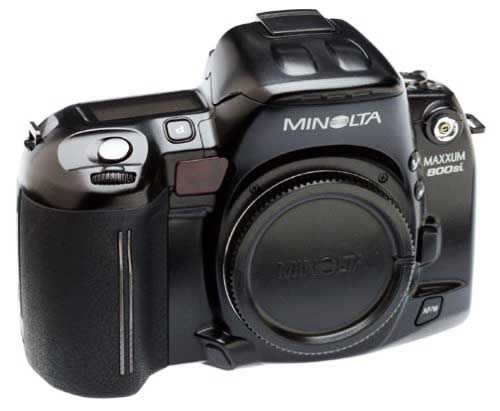
The 800Si is yet another camera to remember. This was truly a feature packed model by Minolta. A zoom-flash, auto film loading, auto wind, auto rewind, low light AF that locked onto even moving subjects in low light…you get the picture! The 800SI was aimed at the advanced amateur user. Its pop-up flash was one of the most powerful in-built flashes ever to be put into a camera.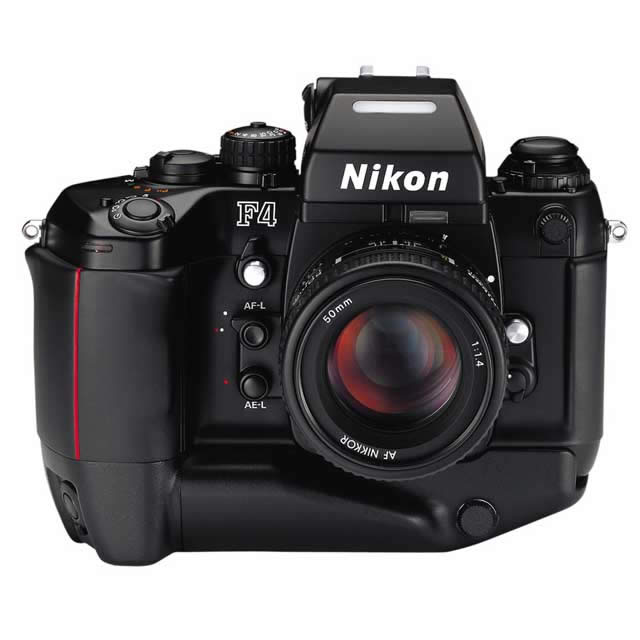
The Nikon F4 was launched in 1988, and it was popularized as ‘the legend’. The choice of professionals for many years, the F4 took any manual or AF lens produced by Nikon since 1959. A rugged design, and dependable build quality were the hallmarks of the F4. This was a fully electronic camera, and required at least one of its three batteries to be charged for normal operations. A range of film backs and viewfinders made this a classic professional camera body.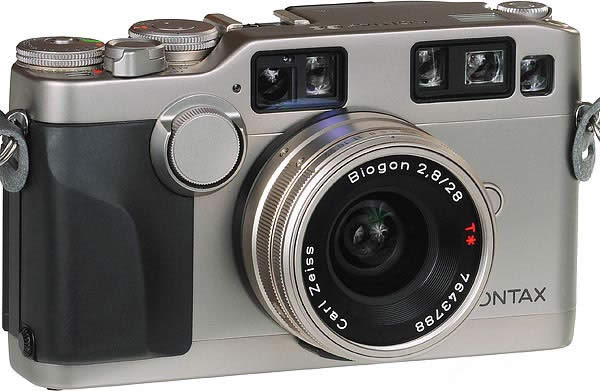
The G1 and G2 formed the core of the ‘G’-system from Contax. These rangefinder cameras were, in appearance very much like the classic range finder cameras from the 30s or 40s. However, advanced technological features such as auto focus and auto wind made the G2 a pleasure to use. The CZ lenses from the G series gave subtle and realistic color tones on film. Rangefinder cameras are not for everybody, but people used to this system agreed that Contax could definitely give the likes of Leica, a run for their money.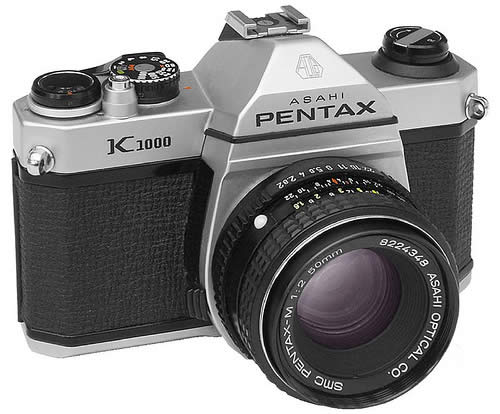
Most photographers have used, or known someone who has used a Pentax K1000 at one time or the other. This was an affordable camera aimed at the amateur photographer, and was launched in 1976. This model quickly became a students’ favorite, and accepted all K-mount Pentax lenses, and lenses made under licensees such as Ricoh and Cosina. It remains a collectors’ favorite till date.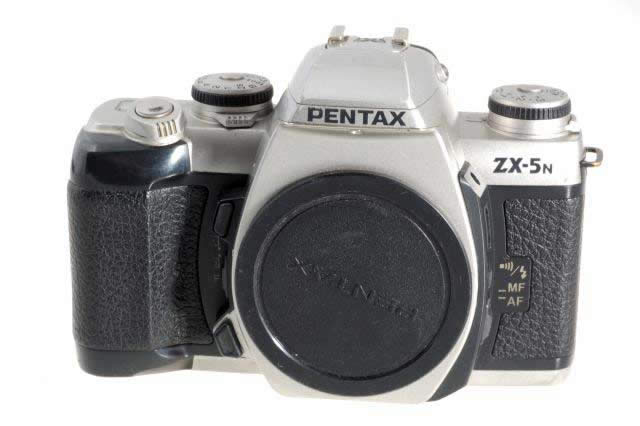
Many people looked at the ZX-5N as a ‘modern classic’. People transitioning from classic manual body SLRs may have found using tiny buttons to change settings, quite a tiresome process. To them, the ZX-5N was a welcome product with traditional shutter speed dials, with the AF thrown in for good measure. Its plastic body was surprisingly robust, and it was a fitting camera to use with the amazing Pentax lenses of the day.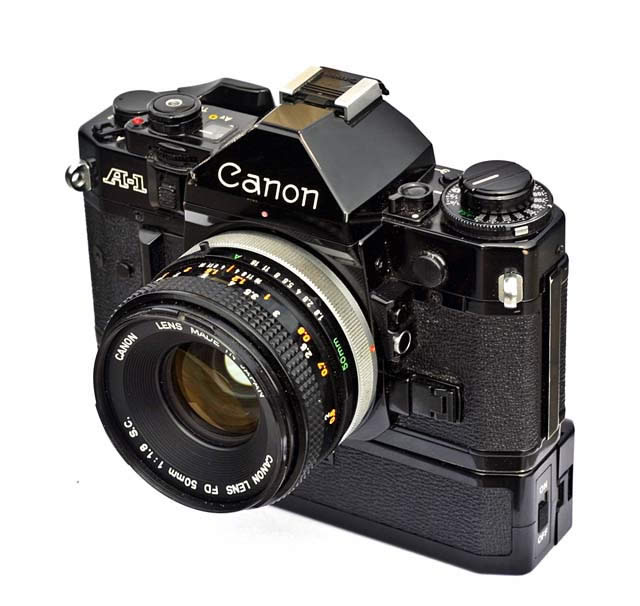
This was an advanced SLR aimed at the professional user, and remained in production from 1977 to 1985. This was the first camera ever to offer a completely electronically controlled auto exposure mode. What this meant was, the photographed did not have to work out that he needed to use shutter speed priority when for example, shooting sports. The A-1 had a microprocessor that automatically worked out the perfect settings based on the light meter input!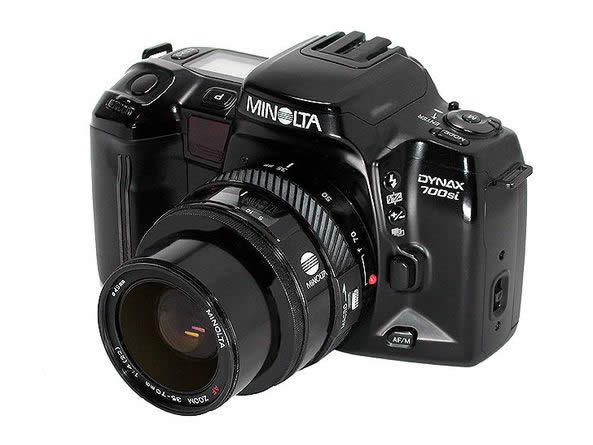
The Minolta Maxxum 700SI was a feature packed SLR, aimed at the professional or advanced amateur user. Its eye-start autofocus system was quite a commendable achievement for its time. But what was appreciated most about this camera was its thoughtfully laid-out control dials. The photographer hardly ever needed to get his eye away from the viewfinder, to change settings.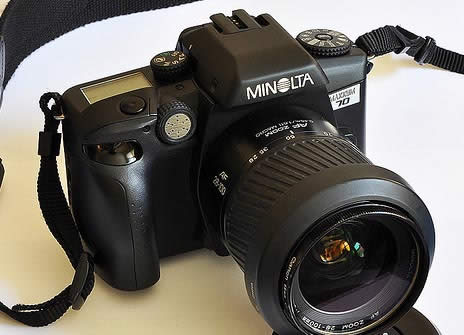
Minolta launched their last two film cameras in 2004, and the Maxxum 70 was the better of the two. Also known as the Dynax 60, this was a low cost product, but thoughtfully so, entering the markets at a time when film cameras were quickly losing popularity. It offered a range of exciting features, and robust build quality. No wonder we still find people using the Maxxum 70! If you are looking for a low cost film body this could still be the right back-up camera for you.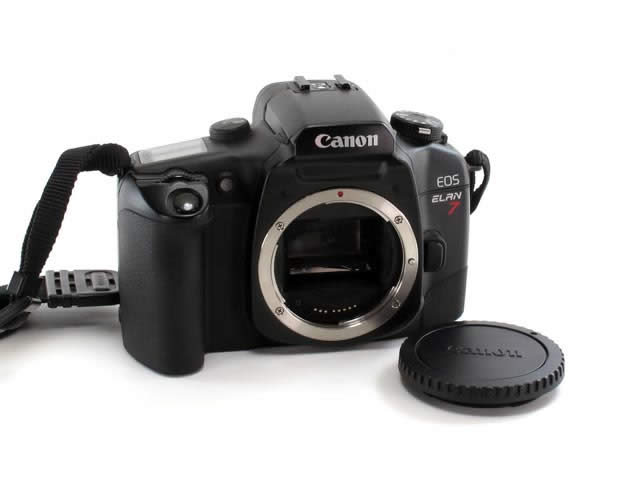
This was a wonderfully light and easy to use camera. Existing EOS users could adapt to it in a matter of minutes, without even reading the manual. It had a very useful mirror lock facility, and photographers who shoot macro or tele would understand the true value of this feature.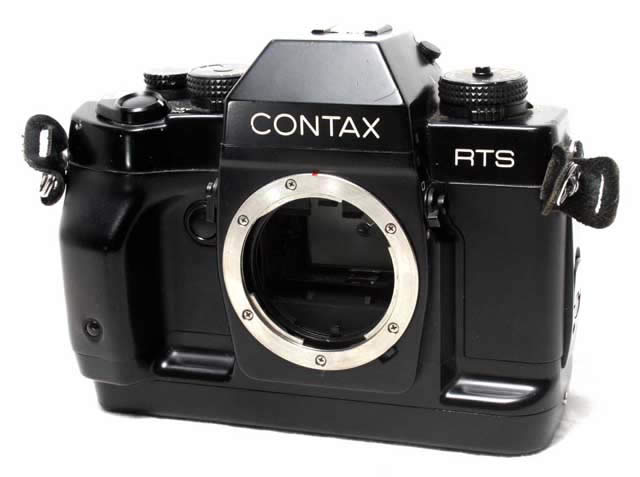
This was an excellent camera launched in the early 90s, which lacked some features but gave other sin return. The Contax RTS II boasted of a vacuum-oriented system to hold the film as flat as possible (Real Time Vacuum or RTV)!
Olympus OM-1 (1972)

The OM 1, thanks to its compact size and versatility, quickly became the favored tool of astro-photographers, in the 70s. Its metal body weighed just over half a kilo, and this is probably why the OM 1 was (and still is ) a part of many astronomers’ kits. The fact that it is still sought after on the used markets speaks of just how much of a pleasure this camera is to use.
Canon T90 (1986)

This was the last of the manual focus professional cameras from the Canon camp, and also the last to use the FD mount. It was a top of the line camera of its time, boasting of features such as the user interface, professional design and automation options. It came with an in built motor drive, giving 4.5 frames per second. The T90 also had the most sophisticated light metering system of its times.
Pentax Spotmatic

Asahi Corporation’s Spotmatic was a legend in its own right. Introduced in 1964, it was the first company to successfully market and sell a through the lens, or TTL metering system. As the name suggests, the camera sued a spot metering system, which turned out to be a delight with photographers around the world. Moreover, the legendary image quality of the Super Takumar lenses that this camera used, is talked about even today!
Leica M7

The ‘M’ series is Leica’s iconic line of range finder cameras that somehow had a special appeal with photojournalists of yesteryear. The M7 is a ‘new’ model in the series, launched as recently as 2002. It bridges the classic M series 35mm versatility and portability, with modern cutting edge technology. It offers complete manual controls, as well as an aperture priority mode. The M7 can still be used mechanically (with limited control options) if you run out of batteries.
Leica Leicaflex SL2 (1974)

This was the third ever SLR to be launched by Leica, following the Leicaflex and the Leicaflex SL. It came with a micro prism and also a split image focusing system, which many found easier to use than the conventional systems of the day. Leica was definitely late to enter the SLR markets, but people who swear by Leica still feel that the Leicaflex SL2 was one of the best SLRs ever to be launched.
Minolta SRT 101

Launched in 1966, the Monilta SRT 101 sold well for over ten years, with only minor changes to the body over the time. This was the first camera from Minolta that offered full aperture metering capabilities, something that took Nikon an additional twelve years to accomplish! The camera had an extremely bright viewfinder with a center prism focusing aid, and was a pleasure to use. It was sold with a 58mm f 1.4 ‘standard’ Roccor lens.
Olympus OM 3

The OM3 was definitely one of the most advanced mechanical cameras ever to have been produced. It offered an incredibly high shutter speed of 1/2000 sec and also the latest metering technology of its time – multi spot. It had a compact body, and a viewfinder that was extremely large and bright. It offered surprisingly long battery life, but of course you could still make use of the mechanical shutter even when and if the batteries were drained out.
Pentax MX

Until the LX came out, this was the flagship professional SLR from Pentax. Like many other cameras of the time, the Pentax MX depended on batteries only for its light meter. The horizontal curtain type shutter was completely mechanically controlled. This was a well-built camera, small in size and high on performance – something that is commonplace today, but quite remarkable at the time. The depth of field preview, lacking in the K1000, was a welcome feature with the MX.
Canon EOS 650 (1987)

When the Canon EOS 650 was launched in 1987, it was unlike any other camera on the market. It had an intelligent lens-camera mount, sensitive to information transfer apart from of course simply mounting the lens in place. This camera marked the beginning of a series of automatic features and ‘intelligent’ cameras from Canon. The electronic input dial on this camera was an instant hit with photographers.
Pentax LX

Launched in 1980 as a ‘pin-sized jewel of a camera’, the Pentax MX remained in production until 1997! This camera body was rugged and dependable, and the choice for many many professional photographers during its 17 year production. The LX came to be known as a camera that would rarely let you down. It was an iconic model if you look at the development of 35mm camera systems over the years.
Minolta Maxxum 800si

The 800Si is yet another camera to remember. This was truly a feature packed model by Minolta. A zoom-flash, auto film loading, auto wind, auto rewind, low light AF that locked onto even moving subjects in low light…you get the picture! The 800SI was aimed at the advanced amateur user. Its pop-up flash was one of the most powerful in-built flashes ever to be put into a camera.
Nikon F4

The Nikon F4 was launched in 1988, and it was popularized as ‘the legend’. The choice of professionals for many years, the F4 took any manual or AF lens produced by Nikon since 1959. A rugged design, and dependable build quality were the hallmarks of the F4. This was a fully electronic camera, and required at least one of its three batteries to be charged for normal operations. A range of film backs and viewfinders made this a classic professional camera body.
Contax G2

The G1 and G2 formed the core of the ‘G’-system from Contax. These rangefinder cameras were, in appearance very much like the classic range finder cameras from the 30s or 40s. However, advanced technological features such as auto focus and auto wind made the G2 a pleasure to use. The CZ lenses from the G series gave subtle and realistic color tones on film. Rangefinder cameras are not for everybody, but people used to this system agreed that Contax could definitely give the likes of Leica, a run for their money.
Pentax K1000

Most photographers have used, or known someone who has used a Pentax K1000 at one time or the other. This was an affordable camera aimed at the amateur photographer, and was launched in 1976. This model quickly became a students’ favorite, and accepted all K-mount Pentax lenses, and lenses made under licensees such as Ricoh and Cosina. It remains a collectors’ favorite till date.
Pentax ZX-5N

Many people looked at the ZX-5N as a ‘modern classic’. People transitioning from classic manual body SLRs may have found using tiny buttons to change settings, quite a tiresome process. To them, the ZX-5N was a welcome product with traditional shutter speed dials, with the AF thrown in for good measure. Its plastic body was surprisingly robust, and it was a fitting camera to use with the amazing Pentax lenses of the day.
Canon A-1 (1977)

This was an advanced SLR aimed at the professional user, and remained in production from 1977 to 1985. This was the first camera ever to offer a completely electronically controlled auto exposure mode. What this meant was, the photographed did not have to work out that he needed to use shutter speed priority when for example, shooting sports. The A-1 had a microprocessor that automatically worked out the perfect settings based on the light meter input!
Minolta Maxxum 700SI

The Minolta Maxxum 700SI was a feature packed SLR, aimed at the professional or advanced amateur user. Its eye-start autofocus system was quite a commendable achievement for its time. But what was appreciated most about this camera was its thoughtfully laid-out control dials. The photographer hardly ever needed to get his eye away from the viewfinder, to change settings.
Minolta Maxxum 70

Minolta launched their last two film cameras in 2004, and the Maxxum 70 was the better of the two. Also known as the Dynax 60, this was a low cost product, but thoughtfully so, entering the markets at a time when film cameras were quickly losing popularity. It offered a range of exciting features, and robust build quality. No wonder we still find people using the Maxxum 70! If you are looking for a low cost film body this could still be the right back-up camera for you.
Canon EOS Elan 7

This was a wonderfully light and easy to use camera. Existing EOS users could adapt to it in a matter of minutes, without even reading the manual. It had a very useful mirror lock facility, and photographers who shoot macro or tele would understand the true value of this feature.
Contax RTS III

This was an excellent camera launched in the early 90s, which lacked some features but gave other sin return. The Contax RTS II boasted of a vacuum-oriented system to hold the film as flat as possible (Real Time Vacuum or RTV)!
Howdie stranger!
If you want to participate in our photoshop and photography contests, just:
LOGIN HERE or REGISTER FOR FREE
-
says:
-
says:
Sorry to see Nikkormat is not mentioned here, could also be used as a hammer:)
( 2 years and 4361 days ago ) -
says:
There are so many candidates missing on the list… BTW: Tthe Canon T-90 was in no way popular in it’s time. Among the professionals it was targeted at, the Canon F1 was way more popular.
Anyway, nice list.
Greetings
( 2 years and 4361 days ago )
Till -
says:
Nice to see the Pentax Spotmatic in the list. I had two of these and they were serviceable for years. Excellent results too, despite being completely mechanical. I also used the Pentax K1000 in college. Was never affluent enough to own a Leica of any sort!
( 2 years and 4360 days ago ) -
says:
What? No love for the Zenit? I think a lot more people owned one of those little Russian tractors than some of the fancier professional models you list.
( 2 years and 4360 days ago ) -
says:
This list to be accurate must include the Leica M3 and the Nikon F and F2 unless it is a list of the most popular 35mm cameras for amateurs only.
( 2 years and 3878 days ago ) -
says:
I really enjoyed reading through this. I have to agree though, the Nikon F is a time tested classic that has to be used regularly by every serious photographer at least once in their lifetime. I own and use dozens of cameras, and the F is always my “go to” body.
( 2 years and 3811 days ago ) -
says:
The Pentax Spotmatic did not use a spotmeter. Prototype versions did – hence the name – but by the time the little masterpiece went into production, the Asahi engineers felt it would be too difficult for average consumers to use, so all production versions used an average metering system.
( 2 years and 3695 days ago ) -
says:
The original canon f1 and the leica m3 and m4 and Nikon f2 should always be included
( 2 years and 3587 days ago )







Surely you have missed the the most influential of all. The Nikon F1. from I think 1959. Look at any press man or war reporter particularly in Vietnam and see what they were using! The series continued F2 etc. With it’s range of Accessories and Lenses, it was THE 35mm SLR.
( 2 years and 4362 days ago )